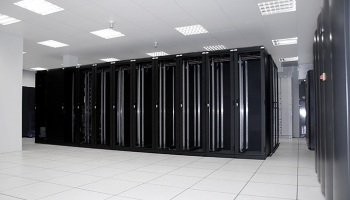Many IT industry people believe that the incorporation of cloud computing services and systems is the single most influential trend in data centre construction and management, and all the indicators certainly point in that direction.
In sanctioning this, market researcher Gartner is venturing further, declaring that there are no fewer than four important forces now directly influencing the building and/or refurbishing of data centres as many enterprises begin to move into a new phase of IT.
Significant impact
Gartner said in a report published on 15 March that primary factors impacting data centres “in a significant way” during the next five years include not only the potential of cloud computing systems but smarter physical designs, emphasis on power saving and other environmental factors, and the realities of impending Big Data workloads on IT systems.
Implicit in that list is the continuing trend toward convergence in data centre hardware, in which more functionality is contained in smaller containers. Server, storage, and networking functionality now can be obtained in a single appliance, for example, from several vendors.
“In the world of IT, everything has cascading effects, and in data centres the traditional methods of design no longer work without understanding the outside forces that will have an impact on data centre costs, size and longevity,” Gartner Managing Vice President and Chief of Research for Infrastructure David Cappuccio said.
“However, these very forces can actually work in your favor, providing the means to apply innovative designs, reduce capital costs and operating costs, increase long term scale, and keep up with the business.”
Key IT systems makers and integrators are keenly aware of this. Industry leaders that include Hewlett-Packard, IBM, EMC, Cisco Systems, Oracle, Accenture – yes, even Microsoft, which is working on its own project of this nature – have invested a great deal during the last few years in their own data centre design services.
‘Shrinking data centres’
To this end, Cappuccio has published a new report on this topic, entitled “Shrinking Data Centres: Your Next Data Centre Will Be Smaller Than You Think”. In the report, Cappuccio points out key differentiators between traditional data centre design of the mainframe era and new-gen data centres.
“Today’s data centres have many different demands on mechanical/electrical systems, depending on workload mix, function and age of equipment,” Cappuccio said. “New designs have taken this into account by adding different density zones for different workload types.”
Most older data centres are woefully under-utilised from a space perspective, Cappuccio said.
“The physical floor space may be nearing capacity, but in many cases, the actual compute space within racks and servers is very poorly used, with average rack densities approaching just 60 percent worldwide,” Cappuccio said.
“Newer designs focus on this issue and are developed to allow optimal rack density, often approaching 85 to 90 percent, on average, thus increasing the compute-per-square-foot ratio dramatically,” Cappuccio said.
“The advent of private cloud environments and resource pooling will provide methods to enhance vertical scalability in the data centre, while at the same time improving the productivity-per-kilowatt ratio.”






